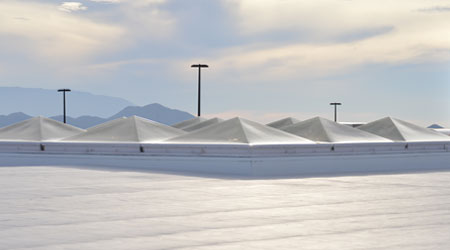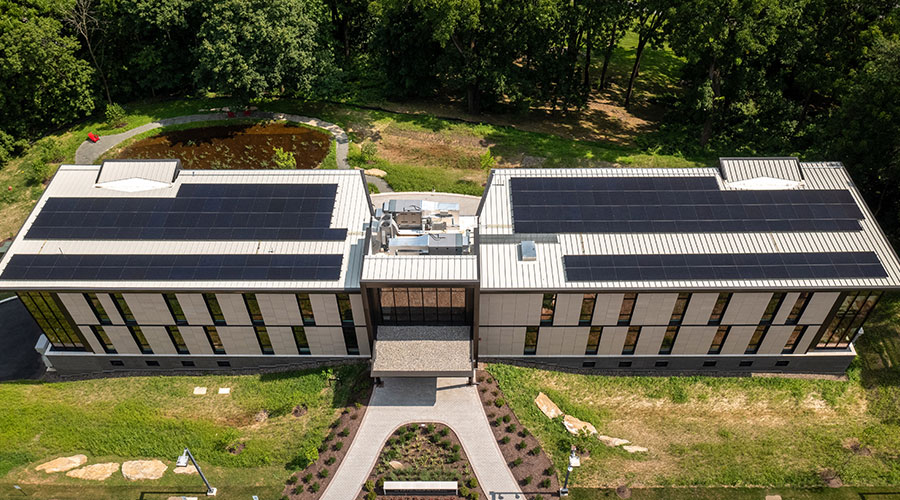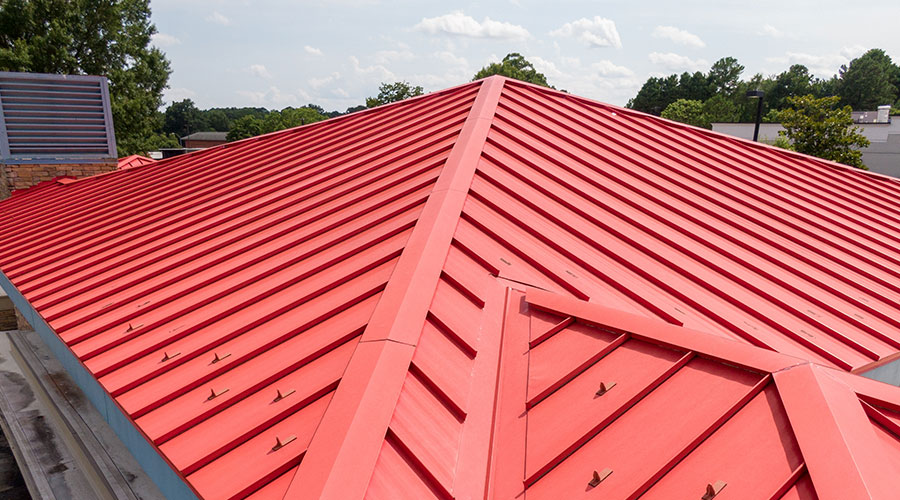 Cool roofs work by reflecting solar radiation and by releasing heat they do absorb.
Cool roofs work by reflecting solar radiation and by releasing heat they do absorb.Are Cool Roofs Beneficial in Cold Climates?
Spoiler alert: Yes. For a number of reasons, cool roofs still have energy-saving benefits in cool climates. Here's why.
In some locales — the desert Southwest, for example — cool roofs are mandated because of their beneficial properties.
“The International Building Code requires cool roofs in southern climate zones [of the United States], but they’re not mandated for northern climate zones,” says Andre Desjarlais, building envelopes program manager at ORNL.
That’s not to say cool roofs don’t offer benefits in northern parts of the country. “Buildings in northern climates may see the energy savings and other benefits of cool roofs, but as with all climates these benefits will vary depending on factors such as specific climate zone, time of year, building type, energy usage patterns, insulation levels, and duct placement,” Abboud notes.
Determining when and if cool roofing actually helps facilities in northern climates has been a long-running debate. One early school of thought was that cool roofing, being light-colored, wouldn’t affect building performance in northern climates because a layer of snow on the roof would have roughly the same effect — in terms of emissivity and albedo — as a cool roof.
But variables always come into play. For example, some parts of the United States have cold winters without significant snow cover. Climate change researchers also point out that some previously snowy regions no longer typically have snow cover throughout the year.
And that’s the challenge in determining cool roof installation benefits for northern climates, says Abboud. “Cool roofs can have a ‘wintertime heating penalty’ (or a small increase in energy use) because they reflect solar heat that would help warm the building,” he says.
Building owners should account for this penalty in assessing the overall benefits of cool roofing, he says. “However, in most U.S. climates, including northern climates, this penalty is not large enough to negate the energy savings from less summertime cooling,” Abboud says. “This is because the amount of useful energy reflected by a cool roof in the winter tends to be less than the unwanted energy reflected in the summer, which occurs primarily because in wintertime days are shorter, sunlight is less intense, and there are generally more cloudy days.”
For more details, Abboud recommends consulting sections 3.1 and 3.2 of Chapter 4 of the U.S. Environmental Protection Agency’s Heat Island Compendium.
Complicating cool roof calculations is the increased R-value requirements of insulation in new construction, says Desjarlais. “Building codes have substantially increased insulation requirements for commercial buildings, so benefits from cool roofing are a bit less, mostly because of insulation requirements,” he says.
What about peak demand?
While cool roofing might cause a mild heating penalty during the winter — by reflecting and emitting solar heat that might otherwise be used to warm the building — experts say that mitigating peak demand charges outweigh any wintertime penalty.
In the original assessments of the economics of cool roofing, one benefit that was overlooked was the peak energy savings that come from reducing high cooling loads, says Desjarlais.
He was part of a team at ORNL that looked at peak-demand charges of users across the United States several years ago.
The ORNL team found that half of electric charges occurred during peak demand periods; the other half was during lower demand times. Today, most major energy utilities will charge users a peak-demand premium as a management method to alleviate strain on generating capacity and the electrical grid. This increase in demand charges has happened across the United States. The result is that peak energy savings is a significant benefit of cool roofs.
Do they need to stay clean?
One early bit of advice for cool roof owners was to keep the roofing material clean — free from debris that might affect performance, but free especially from algae growth that’s bound to happen in ponded water on rooftops.
But experts say this concern over cleanliness is sometimes misplaced.
Desjarlais notes that early versions of membranes — particularly PVC materials — seemed to have plasticizers that would migrate in the material and cause the surface to be tacky, attracting unwanted growth on the rooftop.
“Manufacturers now are using stabilizers that eliminate this migration, so bacterial and algae growth is less than it used to be,” he says. “And though this data is now 15 years old, there’s little evidence to support the cost-benefit relationship of having your cool roof washed because the cost of cleaning was more than your savings.”
Related Topics:














